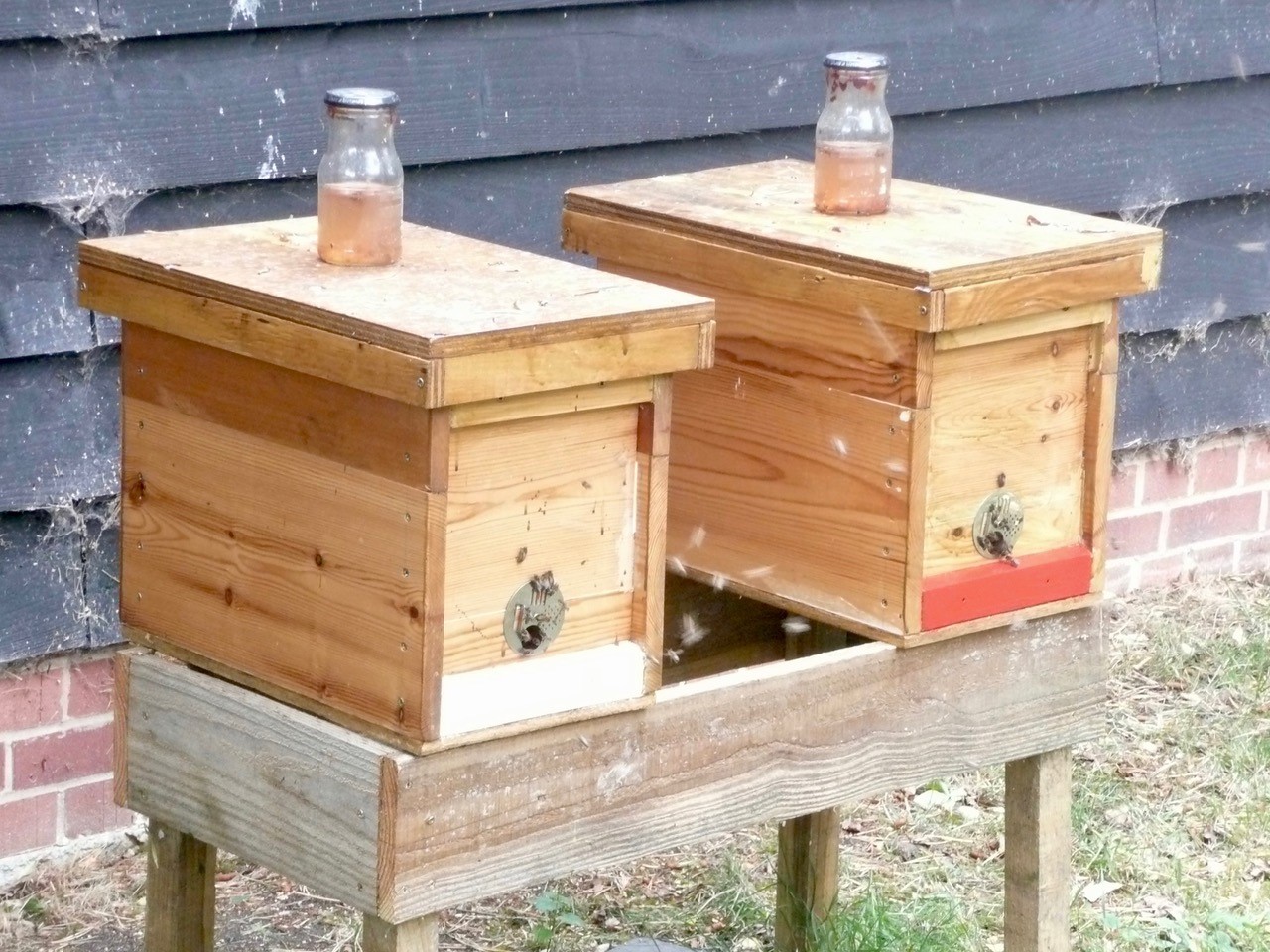Bee Blog September 2018
Hello,
I am Gerald Bushby (pronounced bush bee!) a beekeeper in Weston on the Green, a small village in Oxfordshire. I am going to be writing a monthly blog about the bees in my apiary. I hope you will find it interesting. I should start by saying that I am not an expert, having only kept bees for three years. Anything I say is my own personal opinion; I accept that there may often be other views and opinions.
Last month I was describing how I had purchased two new queens as a means of increasing my hives from one up to three next year. I had already formed one nucleus colony by taking frames of brood from my full size colony hoping they would develop their own queen. I had seen the bees form a queen cell and it was open showing the she had hatched but I could not find the queen and no evidence that she had been mated and was laying eggs to form new brood. Having waited for a period of time that bee books say is required I assumed that there was no laying queen and that I would have to introduce a new queen.
The day before the two new queens were due to arrive I took another two frames of brood from the full size colony, a second time, to form another 5 frame nucleus colony. I locked these bees into the new nucleus box intending to leave them queenless for 24 hours so that the queens pheromones from the full size colony would dissipate in the new nucleus.
I also wanted to double check that there was no a queen in the first nucleus box. I had checked a few days earlier when I had placed the order for the new queens and found nothing. This is important as in most instances two queens in one hive causes problems. One queen will kill the other. You can imagine my surprise on opening up the nucleus to find several cells containing new brood. There was a new queen after all. At the same instance there was the new queen walking across the frame I was looking at as if to say “hello Mr Beekeeper here I am, we don’t read the same bee books that your do” !!!
That placed me in a slight dilemma. Two new queens arriving tomorrow and only one nucleus without a queen. Having already had plan A,B and C. I now needed plan D. I had been told by old beekeepers that queens that had developed from bees being forced to form a queen cell, as I had just done, were not as productive as queens formed from queen cells that had not been forced. I therefore decided to catch and remove the new queen from the nucleus and go ahead with introducing the new queen that was arriving in the post the next day.
I implemented plan D. I caught the queen and placed her in a separate box with some workers and food as a reserve. If the bees did not accept the new queen I could still introduce the old queen back to the nucleus.
The queens duly arrived and I placed one cage containing each queen and workers in each nucleus. Then I left them for seven days without disturbing either nucleus. On opening up seven days later each cage was empty and I was very pleased and relieved to find that I was able to see in both nucleus hives a queen, marked red, running happily over a frame, both of them having been accepted by the bees in the hive.
I am pleased to be able to say that in both nucleus colonies, this months photograph, the queens have started laying and that the numbers of bees are now building up. Day by day I see more flying bees emerging from their entrance to go foraging for nectar and pollen. They both have an opportunity to build up numbers and stores to last them over winter. I have already started feeding them to help this build up and I will continue to do this all through the winter. If they survive I will transfer them to a full sized hive in spring and with luck I will be back up to my three hive target.
It has been a very strange summer for weather with extremes of climate taking place almost overnight. One day recently it was over 30degs in the daytime only to plunge to 5 degs at night. I hope my two new nucleus colonies will be resilient to whatever winter throws at them in the next few months.
I am a proud supporter of the ‘Bees for development’ charity, my love of the bee drew me to this wonderful UK based charity and the great work they do around the world with Bees and the impact they can have on people’s lives. Please help me support this wonderful organisation, as 2BScientific will be doing with donations to this hard-working charity.
